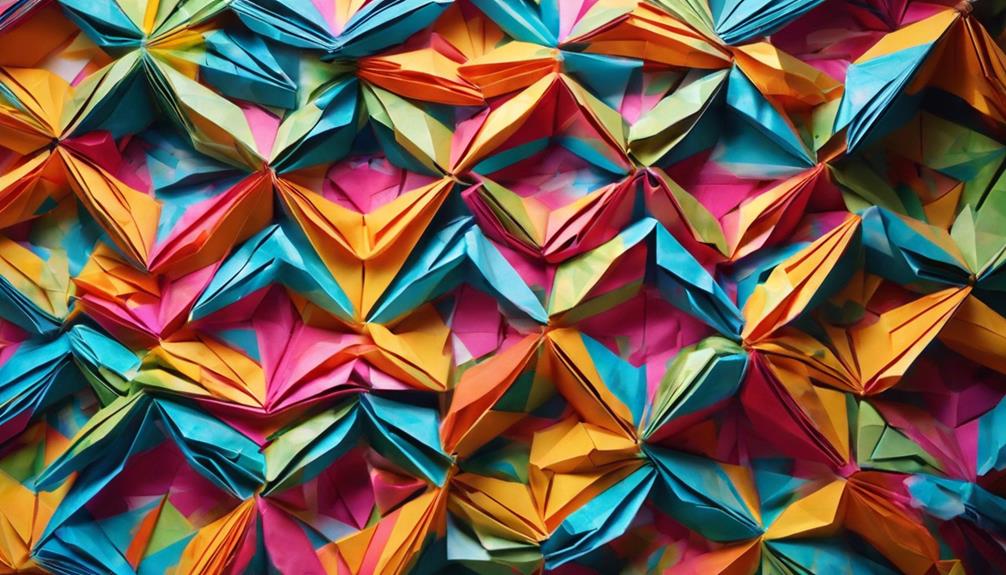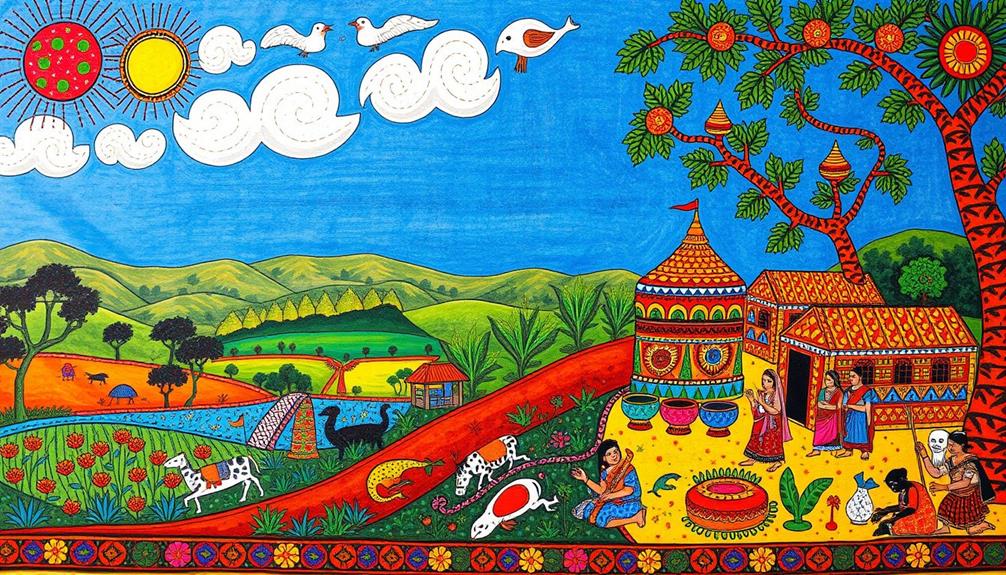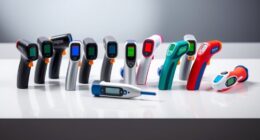Discover Bangalore's cutting-edge art scene through its diverse galleries like the National Gallery of Modern Art, showcasing contemporary works, and Karnataka Chitrakala Parishath, supporting emerging talents since 1976. Explore Venkatappa Art Gallery blending traditional and modern art, Tasveer Gallery championing photography, and Sublime Galleria integrating luxury with creativity in UB City Mall. Embrace avant-garde perspectives at Art Houz, Gallery Sumukha, and Bangalore International Centre, venues offering a fusion of traditional and modern art forms. Ease of access via Metro, auto-rickshaws, buses, cabs, and bike rentals ensures convenient exploration of Bangalore's artistic pulse.
Key Takeaways
- Visit Shanthi Road for diverse contemporary art experiences.
- Explore Tasveer Gallery for innovative photography showcases.
- Attend exhibitions at Sublime Galleria for luxury art experiences.
- Discover emerging talents at Art Houz & Gallery Sumukha.
- Engage with modern and traditional art at Bangalore International Centre.
National Gallery of Modern Art
Showcasing an extensive collection of modern and contemporary art, the National Gallery of Modern Art in Bangalore stands as a cultural landmark in the city. This Indian art gallery is a hub for artistic expression, fostering creativity and providing a platform for both established and emerging artists.
Visitors to the gallery are treated to a diverse range of artworks that highlight the vibrant cultural scene of Bangalore.
The National Gallery of Modern Art is a must-visit destination for art enthusiasts looking to immerse themselves in the rich artistic heritage of India. From paintings and sculptures to installations and multimedia exhibits, the gallery offers a thorough view of contemporary Indian art.
Situated in Bengaluru, the gallery serves as a cultural epicenter, reflecting the city's dynamic and evolving art scene.
With its commitment to promoting and preserving modern and contemporary Indian art, the National Gallery of Modern Art provides a valuable and enriching experience for visitors, contributing to Bangalore's cultural richness.
Karnataka Chitrakala Parishath
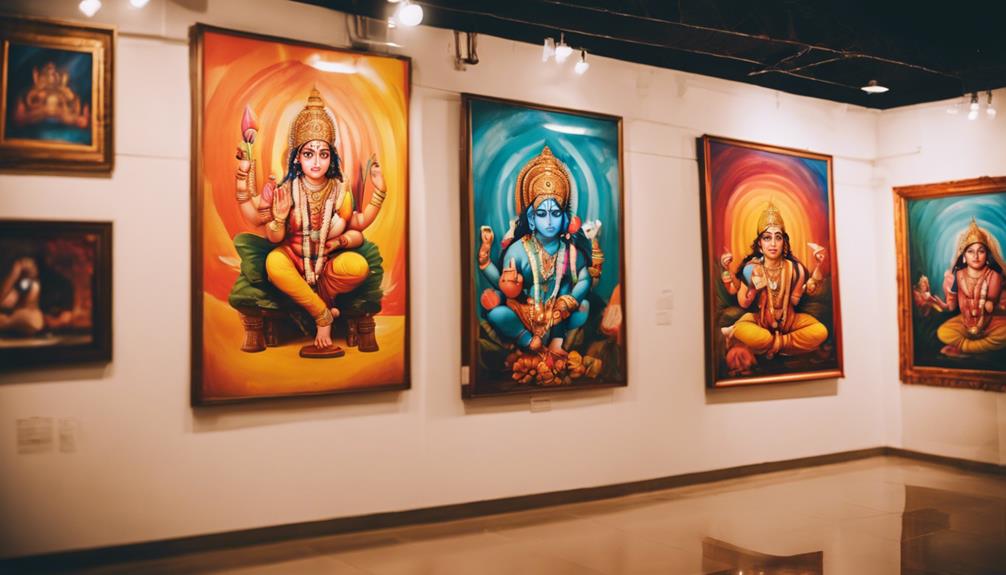
Situated in Bangalore, Karnataka Chitrakala Parishath is an art complex established in 1976 with 18 galleries showcasing a diverse range of art forms. The art complex features a variety of artistic expressions, including folk art, paintings, sculptures, etching, lithography, and watercolors.
Here are three key highlights of Karnataka Chitrakala Parishath:
- Prominent Artists: Karnataka Chitrakala Parishath is known for showcasing works by well-known artists, both from India and abroad, providing visitors with a rich tapestry of artistic styles and influences.
- Support for Emerging Talents: Besides displaying established artists' works, the art complex also nurtures and promotes emerging talents in the art community, offering them a platform to showcase their creativity and skills.
- Cultural Hub: With its extensive collection of Indian and Western art forms, Karnataka Chitrakala Parishath stands as a vibrant cultural hub in South India, attracting art enthusiasts and fostering a deep appreciation for diverse art forms.
Venkatappa Art Gallery

Nestled in the heart of Bangalore, the Venkatappa Art Gallery pays tribute to the legacy of the esteemed artist K. Venkatappa. This gallery serves as an essential component of Bangalore's artistic heritage, offering a diverse and enriching art experience for all visitors.
Located on Kasturba Road, the gallery showcases a harmonious blend of traditional and contemporary artworks, reflecting the cultural richness of the city through its extensive collection.
The Venkatappa Art Gallery provides a significant platform for artists to exhibit their creativity and for art enthusiasts to immerse themselves in Bangalore's vibrant art scene. By focusing on promoting artistic diversity, the gallery attracts a broad audience seeking innovative and thought-provoking expressions in art.
It stands as a beacon for both established and emerging artists, fostering a space where creativity flourishes, and the love for art is celebrated.
Tasveer Gallery

Tasveer Gallery stands out as a pivotal photography hub in Bangalore, showcasing a diverse array of works by both local and international photographers.
Through exhibitions, workshops, and talks, the gallery actively champions photography as a respected art form, fostering creativity and innovation in the city.
With its commitment to promoting photography across genres, Tasveer Gallery plays a crucial role in enriching Bangalore's dynamic art landscape.
Tasveer Gallery Highlights
Known for its dynamic exhibitions and diverse range of photography, the gallery at Sua House in Bangalore plays a significant role in promoting photography as an art form. Tasveer Gallery stands out as a leading photography gallery in Bangalore, showcasing compelling works by both Indian and international photographers. Here are three highlights that make Tasveer Gallery a must-visit for photography enthusiasts:
- Exhibitions: Tasveer Gallery hosts a variety of exhibitions that showcase the creativity and talent of photographers, both established and emerging, from India and around the world.
- Workshops: In addition to exhibitions, the gallery also conducts workshops aimed at nurturing photography skills and fostering a deeper appreciation for the art form.
- Talks: Tasveer Gallery organizes talks by renowned photographers, critics, and curators, providing valuable insights into the world of photography and contemporary styles.
Through these initiatives, Tasveer Gallery continues to enrich Bangalore's art scene, making photography more accessible and engaging for all.
Artistic Vision at Tasveer
Exploring the artistic vision at Tasveer Gallery reveals a deep commitment to showcasing a diverse range of photography styles and fostering creative dialogue within Bangalore's art community. As one of the leading photography galleries in the city, Tasveer Gallery stands out for its dedication to promoting photography as a significant art form.
By hosting exhibitions, workshops, and talks, Tasveer Gallery provides a platform for artists to exhibit their works and engage with photography enthusiasts. The gallery's emphasis on curating a diverse range of photography styles contributes immensely to the vibrant art scene in Bangalore.
Located at Sua House, Tasveer Gallery plays a pivotal role in fostering artistic dialogue and appreciation for photography. Through its innovative approach and engagement with both Indian and international photographers, Tasveer Gallery continues to be a cornerstone in the art world, bridging the gap between artists, galleries, and photography enthusiasts in Bangalore.
Sublime Galleria

What makes Sublime Galleria stand out among Bangalore's art scene is its seamless integration of luxury and art within the prestigious UB City Mall. This gallery offers a unique fusion of creativity and sophistication, attracting art enthusiasts from all around. Here are three reasons why Sublime Galleria is a must-visit for art lovers:
- Diverse Art Collection:
Sublime Galleria provides a visual feast for visitors by showcasing a mix of contemporary and legendary artists' works. The collection appeals to a wide range of tastes and preferences, ensuring there's something for everyone to appreciate.
- Innovative Exhibitions:
Known for its avant-garde approach, Sublime Galleria hosts innovative exhibitions and events that challenge traditional norms and push the boundaries of artistic expression. This commitment to creativity keeps the gallery dynamic and engaging for repeat visitors.
- Central Location:
Situated in the heart of Bangalore, Sublime Galleria is conveniently located, making it easily accessible for those with a discerning eye for creativity. Its prime location within UB City Mall adds to the overall luxurious experience of exploring the art on display.
Shanthi Road

Shanthi Road in Bangalore is a thriving hub for contemporary art, featuring galleries that exhibit a wide range of artistic styles and mediums.
From thought-provoking street art installations to showcasing emerging talents, this artistic enclave offers a platform for innovative and experimental artistic expressions.
Visitors can expect to encounter a dynamic mix of established and up-and-coming artists, contributing to the vibrant cultural landscape of Bangalore.
Shanthi Road Galleries
Situated in Bangalore, the Shanthi Road Galleries host a range of exhibitions, artist residencies, and art workshops. These galleries are integral to Bangalore's vibrant art scene, showcasing diverse art forms by renowned Indian and international artists. Visitors to the galleries can immerse themselves in contemporary Indian art, engage with artists, and attend various cultural events.
Here are three reasons why Shanthi Road Galleries are a must-visit:
- Exhibitions: The galleries regularly feature thought-provoking exhibitions that highlight the creativity and talent of both established and emerging artists.
- Artist Residencies: Shanthi Road Galleries provide a platform for artists to work on-site, fostering a creative environment that encourages experimentation and collaboration.
- Art Workshops: Art enthusiasts can participate in workshops conducted at the galleries, offering valuable insights into different art techniques and styles.
Street Art Installations
With vibrant street art installations by local and international artists, Shanthi Road in Bangalore captivates visitors with its colorful and thought-provoking visual experiences. These street art pieces cover a wide array of themes including social issues, environmental concerns, and cultural heritage. Transforming mundane spaces into dynamic canvases, the street art on Shanthi Road showcases a diverse range of styles from murals to graffiti, offering visitors a rich tapestry of artistic expressions to explore.
Local and international artists alike use the vibrant walls of Shanthi Road as a platform to express their creativity and engage with the community. The street art installations not only enhance the aesthetic appeal of the area but also serve as a medium for artists to communicate messages and provoke thoughts.
Through this unique form of public art, Shanthi Road becomes a hub of creativity and visual storytelling, inviting visitors to immerse themselves in the world of street art.
Emerging Artists Showcase
The Emerging Artists Showcase at Shanthi Road highlights the vibrant talent and innovative work of up-and-coming creatives in Bangalore's art scene.
Visitors to Shanthi Road can immerse themselves in a diverse array of artistic expressions, from traditional paintings to avant-garde installations, showcasing the significance of emerging artists in Bangalore.
The platform provided by Shanthi Road fosters a dynamic environment where young artists can freely experiment with different mediums and styles, contributing to the ever-evolving landscape of contemporary art in the city.
Through exhibitions, residencies, and workshops, Shanthi Road plays an important role in nurturing the next generation of artistic talent, promoting collaboration and creativity among individuals from various cultural backgrounds.
The Emerging Artists Showcase at Shanthi Road not only offers a glimpse into the future of Bangalore's art scene but also serves as a confirmation of the city's commitment to supporting and celebrating emerging talents in the world of contemporary art.
Art Houz & Gallery Sumukha

Art Houz Gallery in Bangalore consistently showcases contemporary art from emerging and mid-career artists, while Gallery Sumukha in Wilson Garden features modern and contemporary works by renowned Indian and international artists.
Art Houz Gallery stands out for its commitment to representing emerging talents and supporting mid-career artists through exhibitions and art residencies. Additionally, the gallery plays a pivotal role in nurturing a dynamic artistic community by offering art education programs.
On the other hand, Gallery Sumukha is renowned for its representation of established Indian artists and its curation of exhibitions that facilitate meaningful dialogues between artists and viewers. Situated in Wilson Garden, the gallery provides a platform for both Indian and international artists to exhibit their modern and contemporary creations, contributing significantly to Bangalore's diverse art landscape.
Both Art Houz Gallery and Gallery Sumukha play integral roles in shaping Bangalore's art scene by offering unique perspectives and engaging with contemporary art practices, enriching the cultural fabric of the city.
Bangalore International Centre

The Bangalore International Centre, situated in the heart of the city, stands as a vibrant hub for cultural activities.
With a diverse collection of textiles, paintings, and sculptures, the center offers a rich tapestry of artistic expressions.
Through exhibitions, talks, and collaborations with artists, the center fosters a dynamic platform for community engagement and artistic interactions.
Venue and Exhibitions
Nestled in the heart of Bangalore, the Bangalore International Centre offers a unique platform for artistic expression through its venue and exhibitions. Here are three key offerings that make it a standout cultural hub:
- Diverse Exhibitions: The center prides itself on hosting a wide range of exhibitions that showcase both traditional and contemporary art forms. From textiles to paintings and sculptures, visitors can immerse themselves in a rich tapestry of artistic expressions.
- Modern Venues: With a nod to the contemporary art scene, the Bangalore International Centre provides a modern and vibrant space for artists to display their works. The center's design and layout are curated to enhance the viewing experience and create a dynamic environment for artistic dialogue.
- Engagement Opportunities: Artists have the opportunity to engage with audiences through art shows and cultural events hosted at the venue. This interaction fosters a deeper appreciation for art and allows for meaningful connections between artists and art enthusiasts.
Artist Collaborations
Exploring collaborations between artists, scientists, and tech individuals, the Bangalore International Centre serves as a dynamic hub for innovative projects blending technology, art, and climate change. Through these collaborative efforts, artists at the center are exploring the boundaries of traditional art forms, engaging in cross-disciplinary projects that result in unique performances and exhibits.
These collaborations not only showcase the creative intersection of AI and artistic expression but also provide a platform for artists to investigate the complexities of our modern world.
Within this vibrant environment, artists have the opportunity to experiment with diverse art forms and practices, fostering a culture of exploration and innovation. By bridging the gap between art and technology, the Bangalore International Centre is driving forward the evolution of visual art, creating a space where creativity thrives and new artistic possibilities emerge.
These collaborations not only enrich the local art and culture scene but also contribute to a global conversation on the role of artists in addressing pressing issues such as climate change.
Community Engagement Opportunities
With a diverse range of events and programs, Bangalore International Centre actively engages the community in cultural exploration and artistic expression. Through its community engagement opportunities, the center provides a platform for individuals to immerse themselves in the world of art and creativity.
Here are three ways visitors can participate and connect with the vibrant artistic scene at Bangalore International Centre:
- Gallery of Modern Art: The center showcases a Gallery of Modern Art that features a curated selection of Indian Contemporary Art, allowing visitors to experience the evolution and diversity of artistic expression in India.
- Interactive Workshops: Bangalore International Centre offers interactive workshops where participants can learn new art forms, techniques, and styles, fostering hands-on engagement with various artistic practices.
- Cultural Lectures: Visitors can attend cultural lectures by renowned artists and scholars, providing insights into the background, significance, and impact of different art forms, enriching their understanding and appreciation of diverse art genres.
Transportation Options
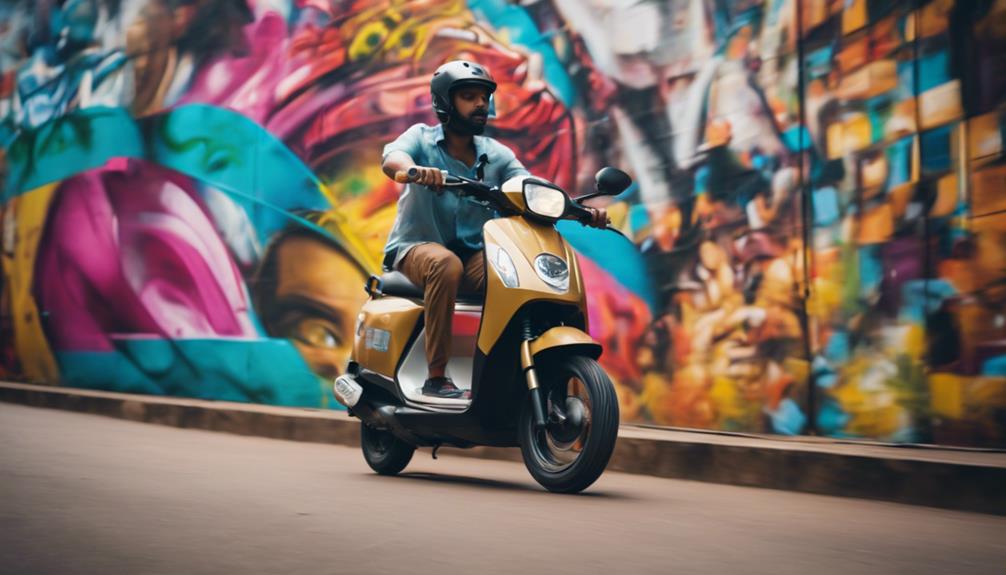
The transportation options in Bangalore cater to diverse needs, offering convenient and affordable ways to navigate the city's vibrant art scene.
The Metro provides a cost-effective means of travel, with tickets starting at Rs. 10, ideal for reaching galleries and museums.
Auto rickshaws are popular for easy access to various art hubs and museums, while Bangalore's extensive bus network covers most parts of the city, including areas near art destinations, making it a convenient option for travelers.
Cab services like Ola and Uber offer a convenient travel alternative, especially during non-peak hours when exploring the art scene.
For those seeking a unique experience, bike rental companies in Bangalore provide the freedom to explore the city at one's own pace, offering an exciting way to immerse oneself in the vibrant art scene.
These transportation options collectively contribute to enhancing the accessibility and enjoyment of Bangalore's dynamic art landscape.
Art News and Events
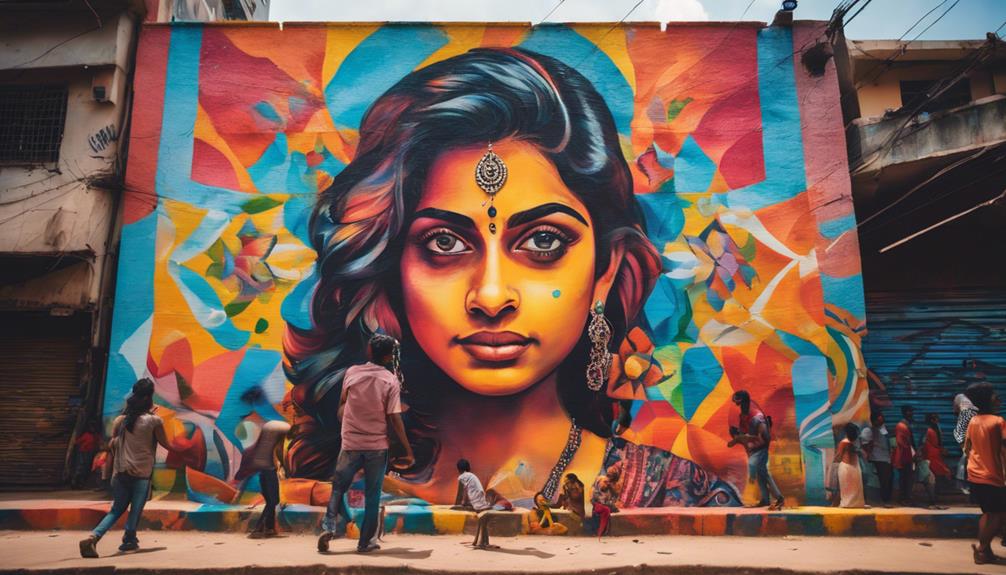
Art enthusiasts in Bengaluru are eagerly looking forward to the India Art Festival, a premier event showcasing a diverse array of art forms and talents. The festival, held at Kings Court, Palace Ground, features over 25 galleries and 400 artists from 40 cities exhibiting 3500 pieces of art.
Here are some highlights of the event:
- Artists Pavilion: The festival includes an Artists Pavilion where over 300 independent artists and 100 established artists present their works, offering a wide range of artistic expressions through paintings, sculptures, and installations.
- Engaging Collectors and Buyers: Bengaluru's India Art Festival emphasizes engaging both seasoned art collectors and new buyers, providing a platform for young talents to showcase their imaginative perspectives alongside established artists.
- Cultural Experience: Visitors can enjoy fusion shows, live musical performances, live painting demonstrations, and a cinematic exploration of Indian art at the festival running from December 14 to 17. The event aims to democratize art viewing and buying while spreading its cultural impact across major cities.
Frequently Asked Questions
What Is the Lost in Bangalore Exhibition?
The Lost in Bangalore Exhibition features emerging and established artists showcasing diverse art forms. Exploring themes of urbanization, technology, and cultural identity, this contemporary art showcase aims to spark dialogue on Bangalore's evolving landscape.
Through innovative perspectives, artists at the exhibition offer insights into the city's growth and challenges. Providing a platform for engagement with Bangalore's dynamic art scene, the exhibition invites viewers to contemplate the city's transformation through artistic expression.
Where Is the Best Art Scene?
When seeking the best art scene, Bangalore stands out with its diverse offerings.
Established galleries like Gallery Sumukha and KYNKYNY Art showcase contemporary and legendary artists.
Institutions like Karnataka Chitrakala Parishath enrich the cultural landscape with folk art and sculptures.
Private museums like MKF Museum of Art and Museum of Art and Photography provide curated exhibitions.
Galleries such as Shades Creative Gallery support emerging artists, fostering dialogue and local talent.
Who Designed the Map of Bangalore?
Richard Sankey, a British architect, designed the map of Bangalore in 1903.
This detailed map was instrumental in planning the city's layout and development during the British colonial period.
Featuring a grid-like structure, the map highlights key areas, roads, parks, and landmarks.
Considered a valuable historical document, Richard Sankey's creation showcases Bangalore's urban planning history and the strategic placement of essential infrastructure within the city.
Conclusion
To sum up, Bangalore's cutting-edge art scene offers a diverse range of galleries and cultural institutions for art enthusiasts to explore.
As the saying goes, 'art speaks where words are unable to explain,' and these venues provide a platform for artists to express themselves and for visitors to engage with thought-provoking works.
Whether you're a local or a traveler, immersing yourself in Bangalore's vibrant art community is sure to be a rewarding experience.
